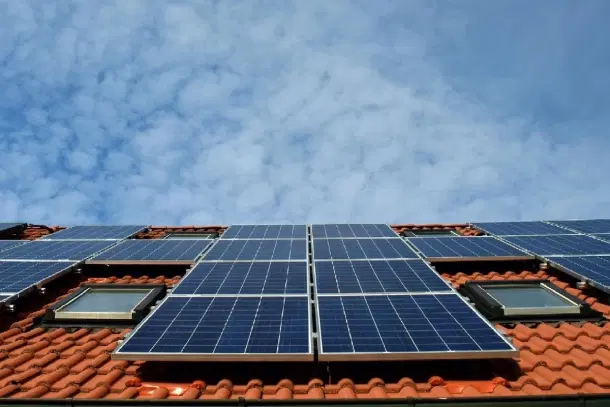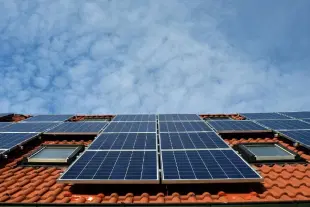Infrastructure
Centre To Link Rooftop Solar Power Scheme With Gati Shakti Initiative
V Bhagya Subhashini
Mar 26, 2024, 06:53 PM | Updated 06:52 PM IST
Save & read from anywhere!
Bookmark stories for easy access on any device or the Swarajya app.


The rooftop solar scheme, which aims to 'solarise' 10 million households, is poised for a potential boost as the government mulls incorporating it into the Gati Shakti programme.
PM Surya Ghar Muft Bijlee Yojana aims to provide free electricity to one crore households in India, who opt to install rooftop solar electricity unit. The households will be able to get 300 units of electricity free every month. It was approved by the Union Cabinet on 29 February.
According to a government official, the Ministry of New and Renewable Energy (MNRE) is exploring ways to align the new rooftop solar scheme with the overarching Gati Shakti plan. The Gati Shakti initiative aims to streamline and accelerate infrastructure projects through a unified approach.
"The rooftop solar systems' data from the national portal on rooftop solar could be integrated into Gati Shakti," the official informed Economic Times. Efforts are underway to finalise the implementation details of this plan, the official added.
PM Gati Shakti Initiative
PM Gati Shakti will incorporate the infrastructure schemes of various ministries and state governments like Bharatmala, Sagarmala dry/land ports, UDAN etc.
Economic zones like textile clusters, pharmaceutical clusters, defence corridors, electronic parks, industrial corridors, fishing clusters, and agri zones will be covered to improve connectivity and make Indian businesses more competitive.
It will also leverage technology extensively including spatial planning tools with ISRO (Indian Space Research Organisation) imagery developed by BiSAG-N (Bhaskaracharya National Institute for Space Applications and Geoinformatics).
By integrating the solar rooftop programme into Gati Shakti, stakeholders such as power distribution companies (DISCOMs) can enhance their infrastructure planning and capacity addition strategies.
This alignment will facilitate comprehensive mapping of the solar rooftop programme, including details of localities and households where rooftop installations are planned or already completed. "The advantage is that the DISCOMs can assess the need for transformer capacity in specific areas where clusters of rooftop installations are concentrated," the official elaborated.
The integration of the rooftop solar scheme into the Gati Shakti programme represents a significant step towards achieving India's renewable energy goals while also enhancing infrastructure development. Overall, the synergy between the two programmes holds promise for accelerating progress towards a sustainable and resilient future for India.
V Bhagya Subhashini is a staff writer at Swarajya. She tracks infrastructure developments.





